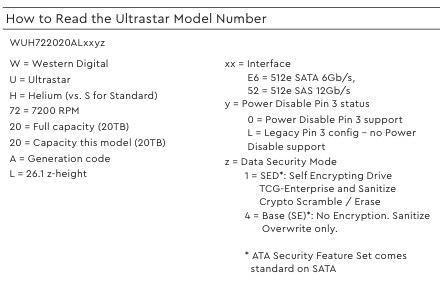I have noticed that while window shopping for hard drives online that WD and Seagate hard drive power consumption is very different. For instance when you see a WD large multi-platter drive, it might say 12v .47a 5v .49a then I look at a Seagate drive and it will say 12v .97a 5v .94a. Why does Seagate always from what I see use close to double the wattage? Yes I understand that different drive models have different specs but these are from similar models both being enterprise SAS with helium seal and 7200 rpm.
Now I think someone must be fibbing because these power usage specs should be for the absolute most that these drives will use not average usage or some nonsense like that. This should be the absolute max rating during spin up and heavy writing for both 5v and 12v. I fail to see how Seagate could be typically that much heavier in power usage and remain competitive in the market as any company will factor in power usage
as part of the cost of operate thousands of disks.
Just seems odd to me. Anyone want to guess why this might be?
seagate 16tb helium - about 5w
wd 16tb helium - 5,6w
Seagate more energy efficient in real world.
Real numbers example - https://www.hardwareluxx.ru/index.php/artikel/hardware/storage/53184-test-i-obzor-wd-red-pro-20-tb-wd201kfgx-bolshaya-emkost-blagodarya-pamyati-nand.html?start=2
20tb WB - 29w at start up, it consume more than 2A current from 12v line, and 0,5A at label
I think the other specs end up exciting the IT crowd and managers more (warranty periods, suppliers, performance, etc). Also if you tell them the Seagate is $10 cheaper, they’ll buy it anyway even at double the power consumption - way easier to convince their clients they got the best prices on hardware up front and just bill them for the operating expenses on the other side.
It’s us Chia folk that have a simpler formula: get best bang for the buck - that’s what gets us looking at things like power consumption or $/TB that most corporations don’t fret over.
Just for fun I pulled the wattage specs on my 3 8TB drives I have running:
WD Blue 8TB 6.2 watts Read/Write WD80EAZZ
WD Shucked 8TB 8.8 watts Operating WD80EDBZ (asumming it’s an Ultrastar HC320)
Seagate Ironwolf 8TB 10.1 Watts Average Operating ST8000VN004
My sample size is small, but it is in line with your claims ![]() .
.
Ultrastar models start in WUH.
Hi!
It seems that both of you are a bit far from the truth… ![]()
Ultrastars have different codes (but not WD80***) - those with small capacity are HUS***, and those from 10TB are coded WUH*** or WUS*** (depending on whether with or without Helium).
From what I remember, the first letter (W or H) refers to the manufacturer - because Western Digital is a combined force - including: with an old, very good HDD manufacturer, i.e. Hitachi (one of the best drives I had in the old days).

EDIT:
By the way, I chose only Western Digital drives from the Ultrastar series (18TB) for the farm. They have really good reviews. So far - everything is fine with them. Apart from that, all really all of the Seagates I bought were problematic for me - or I was just unlucky (it’s hard to talk about statistics - because I only had a few of them - about 6-8 pieces).
The HUS drives are HGST branded, as opposed to WD Ultrastar branded after HGST was full merged into WD - and would predate the Helium designs, therefore run hotter vs capacity and have fewer platters.
You are correct about the “W” vs “H” in the first letter - but keep in mind that WD bought out HGST about a DECADE ago, and were not allowed to completely merge operations for most of that time.
In fact, the entire reason Toshiba has “helium technology” was part of the government-imposed “anti-monopoly” requirements imposed on WD as part of the buyout (there was also a small swap of factories, 1 each way IIRC).
I’ve never seen an Ultrastar that was small enough to NOT be helium, but I suppose they exist after the full merge-in on some of the older still-made drives - if WD is still making 6TB and 8TB models.